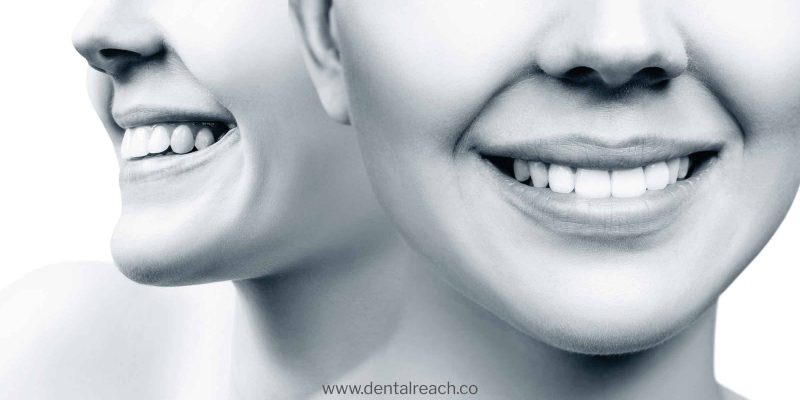Orthodontics is the advanced training in a sphere of dentistry mainly concerned with the study as well as treatment of malocclusion, irregular positioning and disproportionate relationship of jaws. The word orthodontics is derived from the Greek language Ortho, meaning straight and Odont, meaning tooth. Orthodontic treatment has mainly two aims; pragmatic – to improve irregular positioning of teeth causing various issues like bite problems, occlusion, etc. and cosmetic – to design a healthy and beautiful smile over a period of time thereby the appearance of the face.
Orthodontics
Orthodontists should be fully aware how the teeth work and its affects and effects an oral wellbeing.
Orthodontists base their understanding of mechanics of tooth movement on three principles:
1. Development and growth of jaws and teeth.
2. Teeth alignment within dental arch.
3. Occlusion of teeth and its functions.
Smile design in a unique way through Orthodontics
Through orthodontic treatment, proper positioning and teeth alignment is one of the prerequisite methods to design a beautiful smile.
Diagnosis by orthodontist
Orthodontists will evaluate and determine the recommended age for orthodontic treatment. This plays a crucial role in the plan and assessment of the treatment. All medical, dental history of a client is required prior to undergoing orthodontic treatment.
First step would be taking an impression with which moulds of the teeth will be made. Articulator is a study model placed in an articulator to study and replicate jaw movement of the patient. Next, jaw and teeth x-ray with specialized radiograph are captured through a computer. Records are extremely important for images and it also helps an orthodontist determine the treatment plan. Details of records are also necessary for teeth stabilization and also to prevent the relapse of teeth after orthodontic treatment. The main motive is to give them a healthy smile for life.
Teeth movement
Orthodontist uses appliances with small brackets placed on the teeth through which flexible wire is threaded within the braces. Flexible wire tends to place light forces on the teeth and tends to move their teeth in order to straighten without any distortion. Movement of teeth is due to the characteristics of periodontal ligament which is elastic and attaches to the bone of the teeth. The living tissues in our mouth are remodelling and changing constantly. When mild force is applied in a controlled way on the tooth due to tension cementum, ligament and bone are formed. Tension is mainly due to pulling side whereas on the pressure side, in order to allow tooth to move, even cell will remove ligament and bone. Overall, the outcome of orthodontic treatment is taken into consideration that is to aim for function, stability and aesthetics. The discrepancies in the position of tooth and bite problems are considered to be basic modality. It is equally important to determine where the position of teeth must be, the methodology used for moving the teeth, stabilisation and retention as the treatment is completed. So, orthodontic experience is found to be vital in determining the orthodontic treatment plan.
Orthodontic appliances
There are several options to select appliances whilst undergoing orthodontic treatment. In fixed appliances, the patient cannot remove the braces on their own. The primary one is such that for posterior teeth, orthodontic band and anterior teeth, bonded bracket and it is known as a traditional bracket. An individual who intends to have aesthetic appliances may go for clear brackets which are less visible. During the course of treatment, it is highly recommended to avoid hard foods. Fixed appliances are used in comprehensive and complex cases. A clear aligner is a choice of treatment for reposition of teeth and it is known as removable appliances. It gives the teeth a better alignment since each one is different from preceding one. Removable appliances are used in cases which are milder and for tipping movements of the tooth. Simple movements of teeth may take at the most few months whereas complex movements may take 18 to 24 months or more, depending on severity and depth of the case. The diagnosis and careful assessment are considered to be the important factor in choosing an appropriate choice of appliance used for the treatment procedure.
Dental Surgery
Dental surgery is a type of dental treatment combined with surgery done to correct jaw and face, concerned with growth, structure, skeletal discrepancies and TMJ disorders. Orthodontist, combined with oral and Maxillofacial Surgeon focuses on treating craniofacial complexes related to skull, face, jaw and mouth. It is essentially needed when the jaws align improperly and proper bite results cannot be achieved by orthodontics alone. Orthodontic surgery can be done only when the jaw growth is complete; in females at 16 years and in males at 18 years. So, orthodontic surgery aligns the jaws and braces by the treatment which is used to move the teeth into proper position.
This treatment is one of the most important scientific discovery in the field of dentistry since it impacts all of oral health. It also enables your teeth to move into proper position which has a great influence psychologically.
Bonus: Download our monthly e-bulletin!Click here to get it
DISCLAIMER : “Views expressed above are the author’s own.”




















Comments